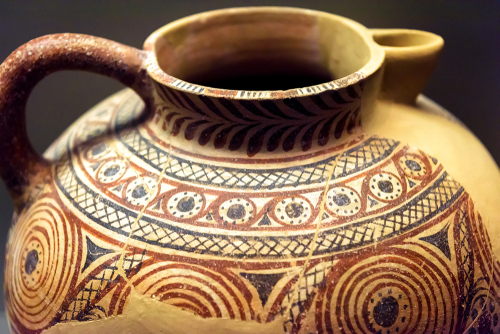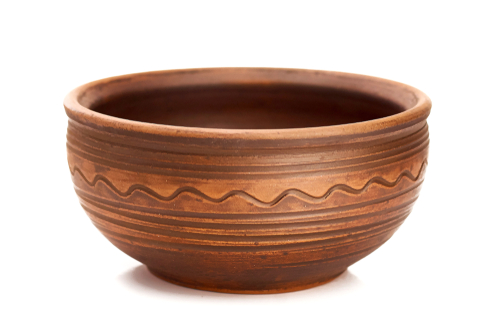There are many important differences between traditional ceramics and modern advanced ceramics. These vital differences allow advanced ceramics to withstand very high heat, and make modern advanced ceramics an extremely strong material.
Since the invention of traditional ceramics, there have been numerous advancements in raw materials used for making advanced ceramics, as well as the production process itself. This has allowed advanced technical ceramics companies to continue improving their processes and making advanced ceramics of beneficial properties.
Now, let’s take a look at all the major differences between traditional and advanced ceramics, and see just how much advanced ceramics have improved upon the initial variations.
What is the difference between traditional and advanced ceramics?
 Before diving into the four major differences between traditional and advanced ceramics, it is worth taking a look at what exactly these two distinct ceramic types are. So, let us first see what these two varieties of ceramics are:
Before diving into the four major differences between traditional and advanced ceramics, it is worth taking a look at what exactly these two distinct ceramic types are. So, let us first see what these two varieties of ceramics are:
What are traditional ceramics?
Traditional ceramics are materials made from naturally-occuring materials, such as quartz sand or clay minerals. They are mainly used for the creation of clay tile and brick, china tableware, refractory linings, and industrial abrasives.
What are advanced ceramics?
The term advanced ceramics refers to all the products made from inorganic, high-purity compounds through a series of specialized manufacturing processes. Advanced ceramics can be used for various purposes due to their permeability, magnetism, insulation, and conduction.
How are traditional and advanced ceramics different?
Now, it’s time to take a look at the four big differences between traditional ceramics and advanced ceramics.
1. Raw materials
As mentioned, different types of raw materials are used for manufacturing traditional and advanced ceramics. While traditional ceramics are made using natural materials, such as feldspar, quartz, or clay, advanced ceramics are made using synthetic powders, such as aluminium oxide, silicon carbide, silicon nitride, and others.
2. Structure
The composition of clay is what decides the structure of traditional ceramics. Depending on the origin of the natural material used to produce traditional ceramics, they will have a different texture. Traditional ceramics have more imperfections that affect quality control.
On the other hand, the structure of advanced ceramics can be modified by altering the chemical compound used to make it. This makes the microstructure of advanced ceramics uniform and without impurities or imperfections.
3. Manufacturing process
The minerals used for manufacturing traditional ceramics can be used directly for wet molding, such as grouting, molding of slurry or plastic molding of mud. There is usually no need for additional processing upon high-temperature sintering of traditional ceramics.
On the other hand, the production of advanced ceramics may require additional post-sintering processing. There are advanced ceramic products that may need to undergo certain secondary operations during the manufacturing process through use of machining methods. This may depend on different factors such as the part finish or finished (net) dimensions. However, this is rarely the case when producing products from traditional ceramics.
4. Function
Traditional and advanced ceramic have different uses. While products made from traditional ceramic are mainly used for manufacturing daily-use items and building materials, advanced ceramics are implemented for manufacturing various specialized parts that need to possess exact mechanical or physical properties for different industry requirements.
What are the examples of technical ceramics?
There’s a wide range of superior technical ceramics that are highly specialized and can be tailored for extremely demanding applications across industries such as electronics, aerospace, automotive, medical, and energy. Here are some of the most widely applied technical ceramic examples:
- Alumina (Al2O3): It features high hardness, thermal stability, and corrosion resistance, which is why it’s excellent for applications that require wear resistance.
- Zirconia (ZrO2): This oxide is known for its high toughness and resistance to cracking.
- Silicon carbide (SiC): It’s highly durable and resistant to high temperatures and wear.
- Silicon nitride (Si3N4): This compound features high strength and toughness and exceptional resistance to thermal shock.
- Titanium dioxide (TiO2): It has excellent photocatalytic properties and a high reflective index.
What are the uses of ceramic technology?
Advanced technical ceramics companies understand that various industries benefit from advanced ceramic technology due to the materials’ unique properties. The following are the most common technical ceramic uses across industries:
Electronics & electrical engineering
Alumina has a wide application in power lines and electronic components as electrical insulator, as well as resistor and capacitor for electronics. It’s also employed in semiconductor devices that operate at high temperatures or voltages.
Aerospace & defense
Ceramics are excellent for use in heat shields and thermal protection systems in spacecrafts and high-speed aircrafts. In addition, they’re great for lightweight armor for military vehicles as well as body armor.
Automotive
High-performance brake disks, oxygen sensors, and spark plugs are just some of the elements in the automotive industry that leverage the potential of these advanced materials.
Medical
Because of their strength, durability, and biocompatibility, they also have a wide scope of application in joint replacements, dental implants, and surgical instruments.
Industrial
Their hardness and wear resistance makes them ideal for high-performance bearings, cutting tools for machining, and refractories such as kilns, foundries, and furnace linings.
 Who is the leader among advanced technical ceramics companies in America?
Who is the leader among advanced technical ceramics companies in America?
Being familiar with the traditional varieties and the history behind today’s advanced ceramics is important if you’re looking to find out more about how it all started. However, it’s also important for manufacturers of advanced ceramics because it provides them with the opportunity to keep improving their production process and capabilities.
At Wunder-Mold, we know just how important tradition is. We have been in the industry for a long time, and we have gained the experience and knowledge that allow us to produce advanced ceramics of the highest quality. We will carefully listen to your needs and requirements, and deliver a product that will help you advance your business. Contact us today!
 Who is the leader among advanced technical ceramics companies in America?
Who is the leader among advanced technical ceramics companies in America?